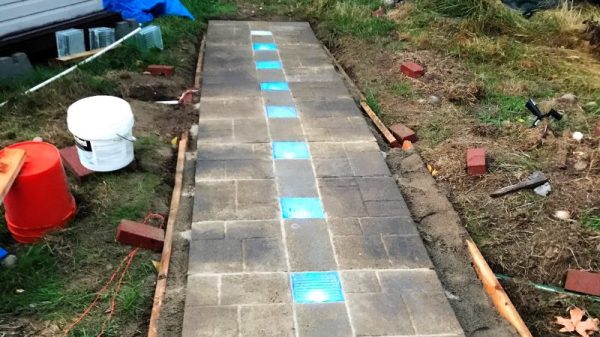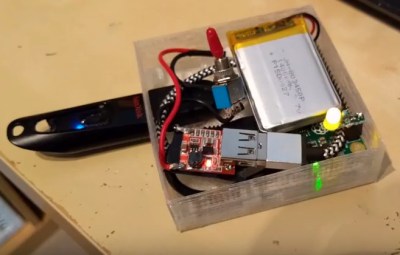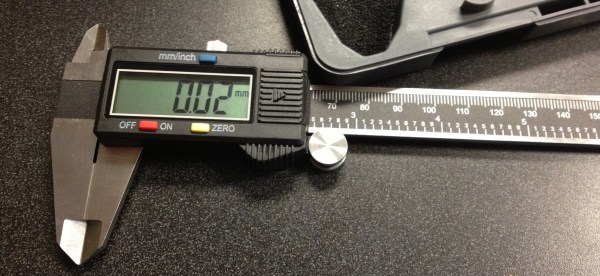Looking to add a little pizzazz to your back garden? Are those strings of lights hung in the trees looking a little dated? Why not try lighting your garden path with DIY solar-powered pavers?
If [jfarro]’s project looks like a miniature version of the much-touted solar freakin’ roadways concept, rest assured that there are huge differences. For one, these lighted pavers actually work — trust me on this; I live not far from the demo site for the Solar Roadways and the degree to which it underwhelms cannot be overstated. Granted, a garden path is a lot simpler to engineer than a road, but many of the challenges remain.
Using recycled glass blocks that are usually reserved for walls and windows, [jfarro] figured out how to attach Neopixel rings to the underside and waterproof them with a silicone conformal coating. The 12 lighted pavers he built draw considerable current, so a 45-watt solar array with charge controller and battery were installed to power the pavers. An Arduino and a motion sensor control the light show when someone approaches; more complicated programs are planned.
Hats off the [jfarro] for taking on a project like this. We don’t often see builds where electrical engineering meets civil engineering, and even on a small scale, dealing with dirt, stone, and water presents quite a few challenges. Here’s hoping his project lasts longer than the Solar Roadways project did.






















